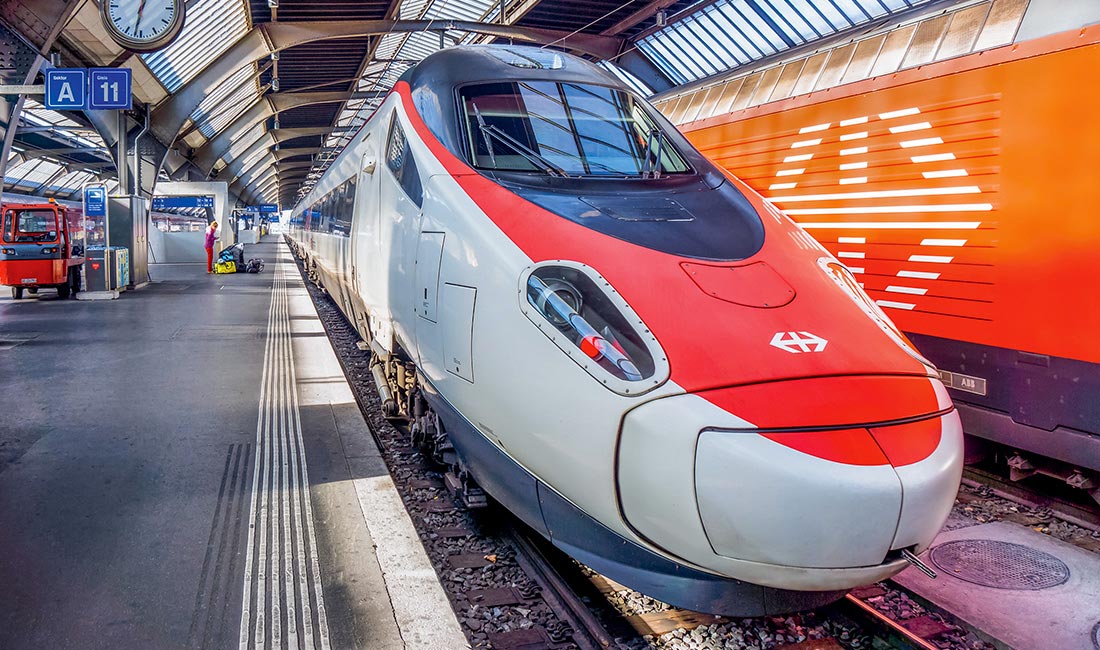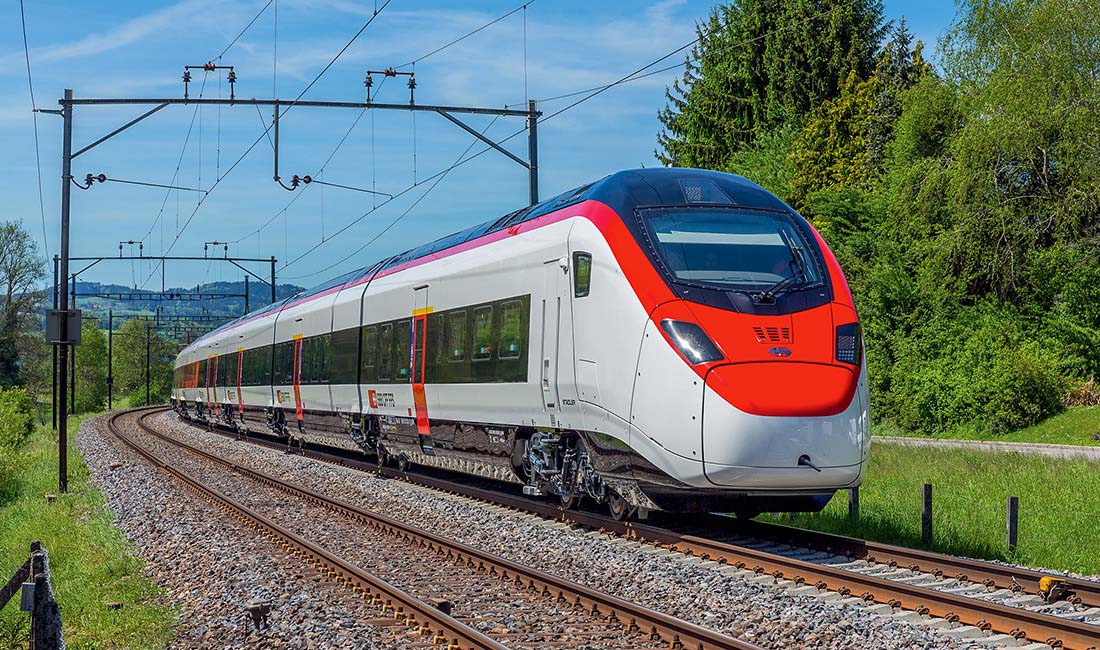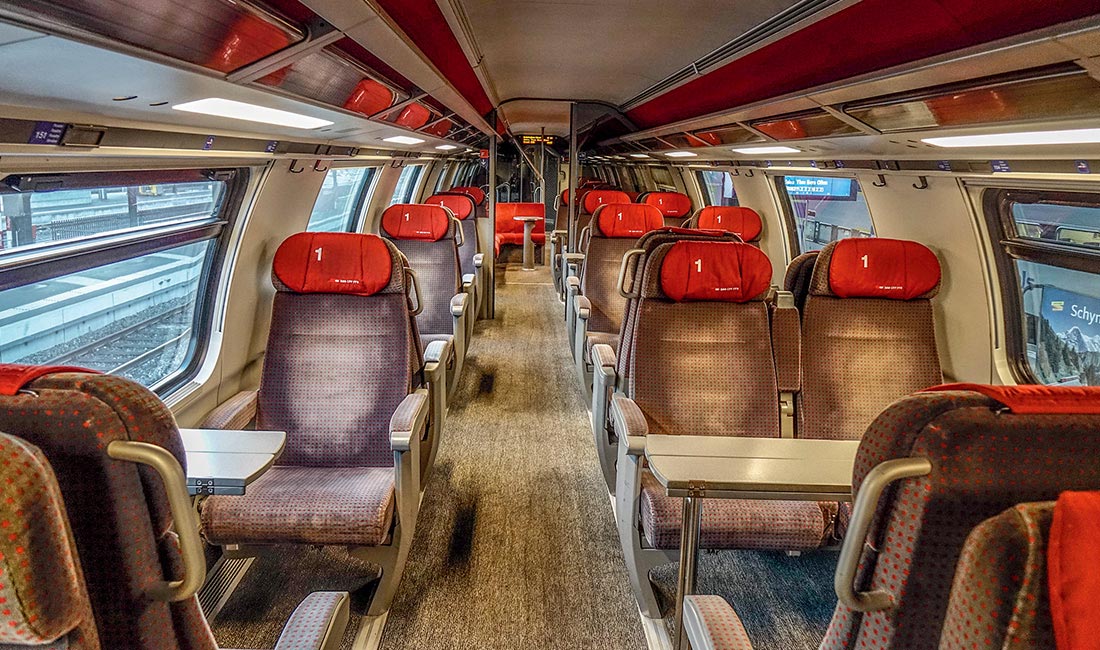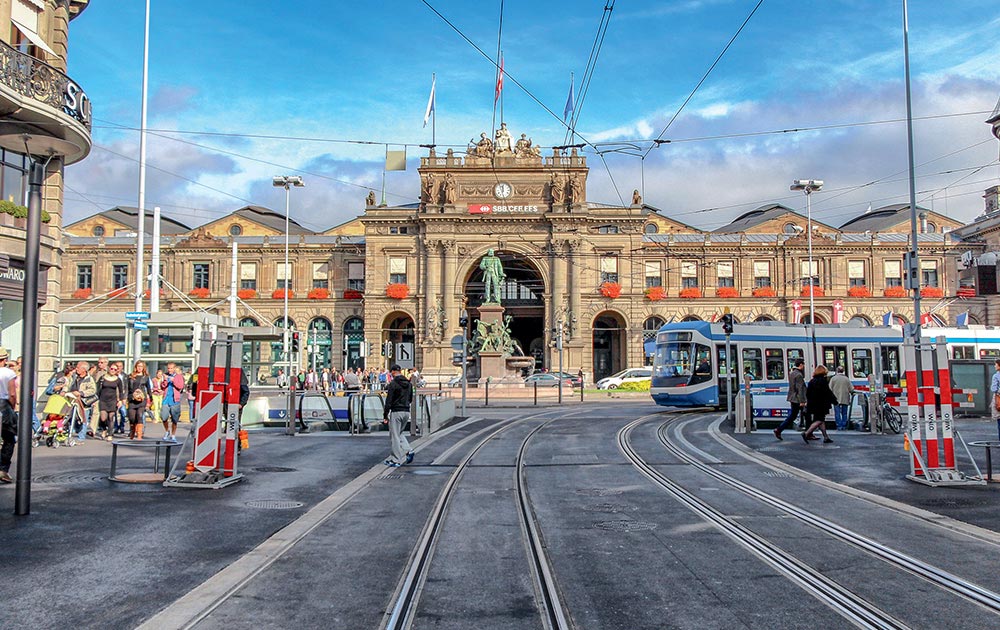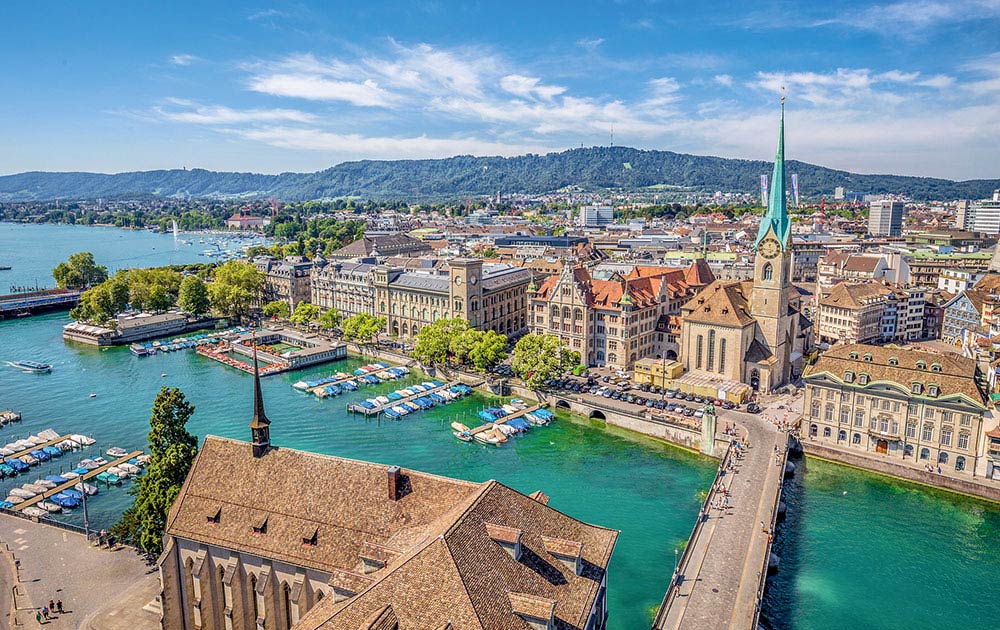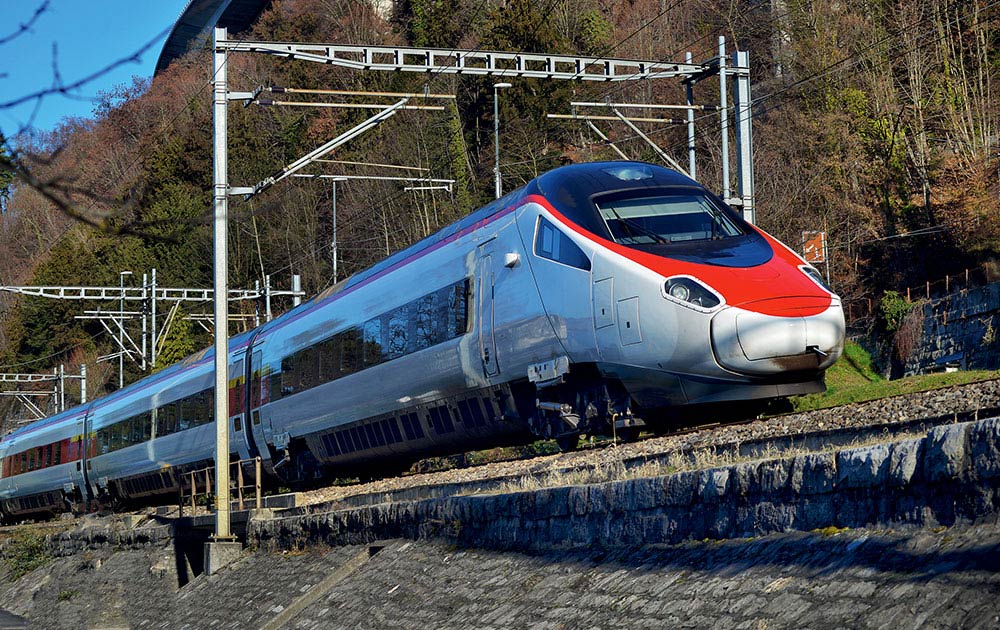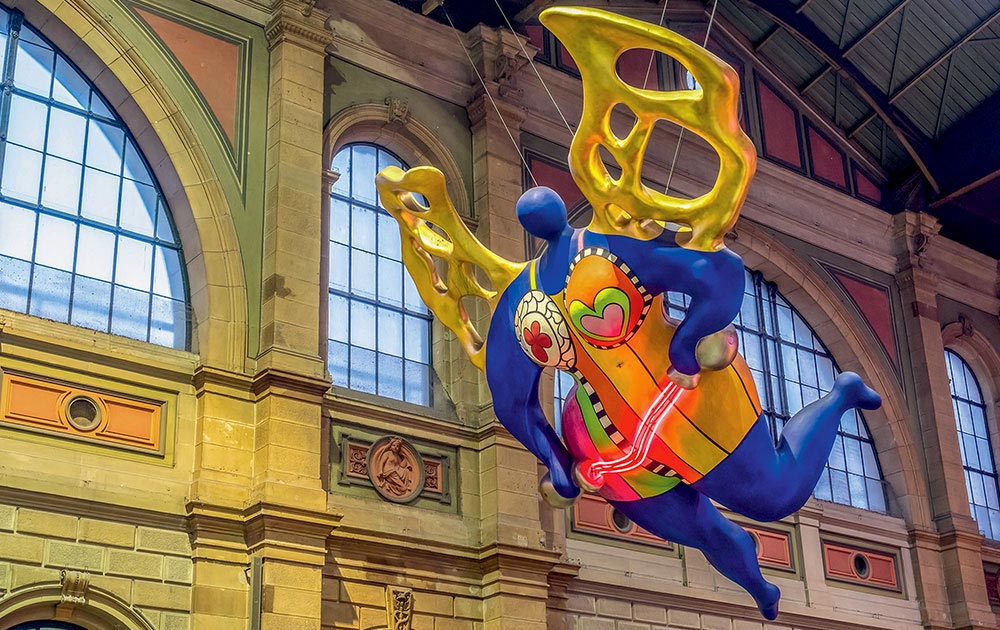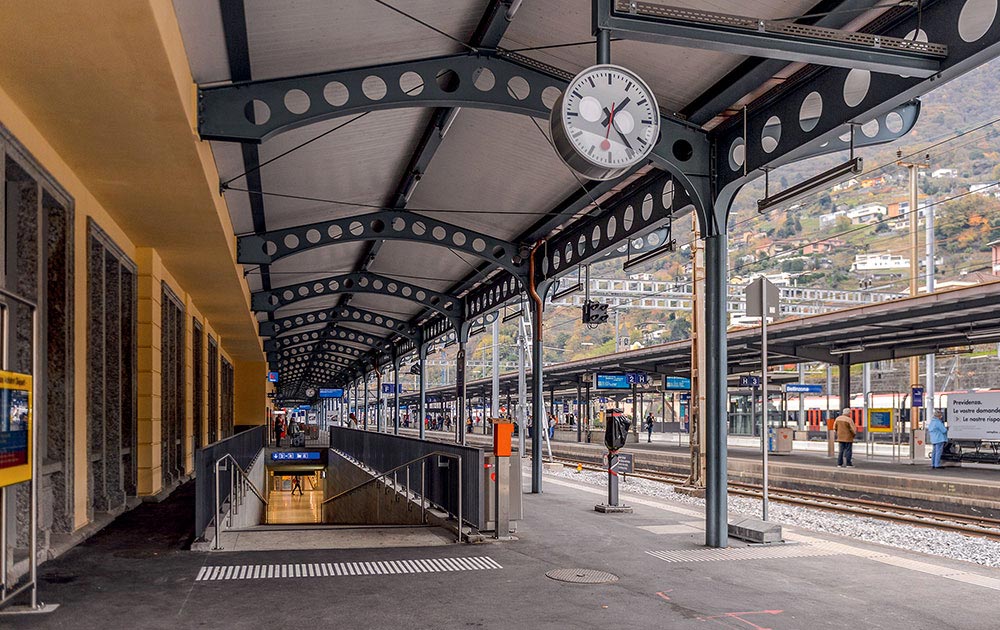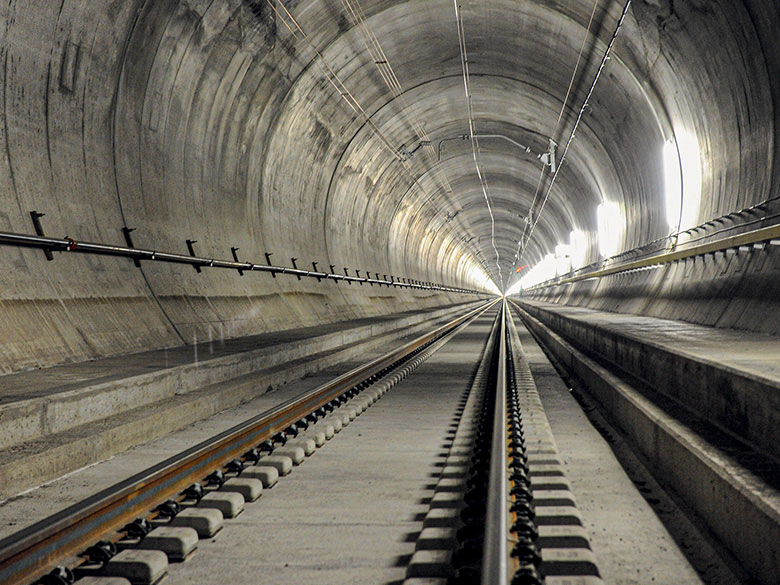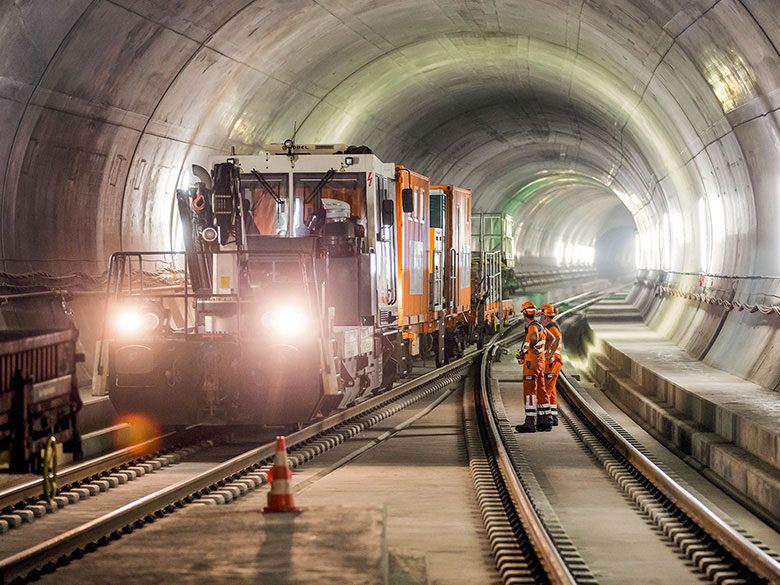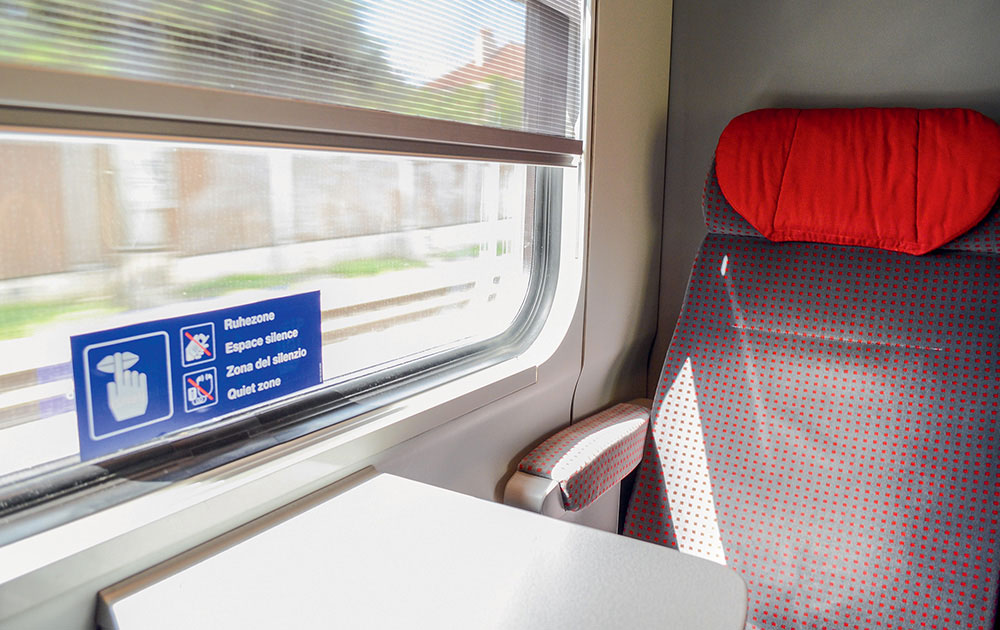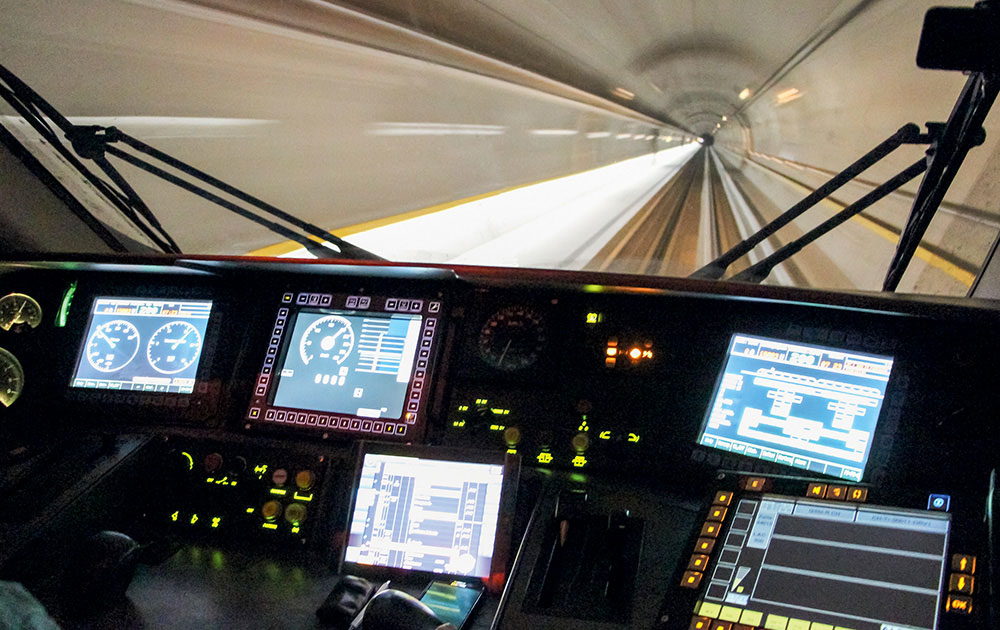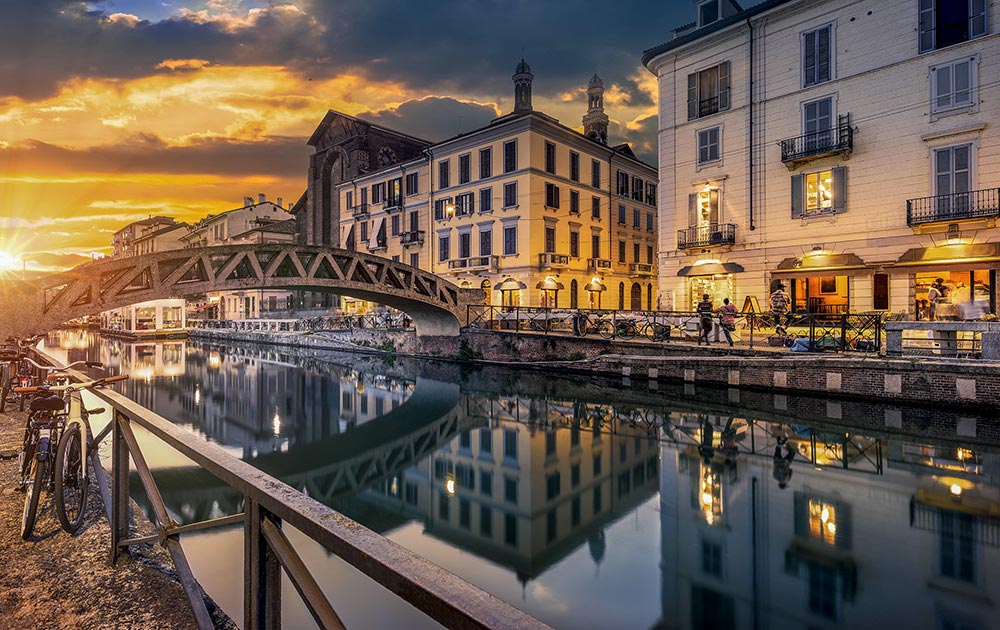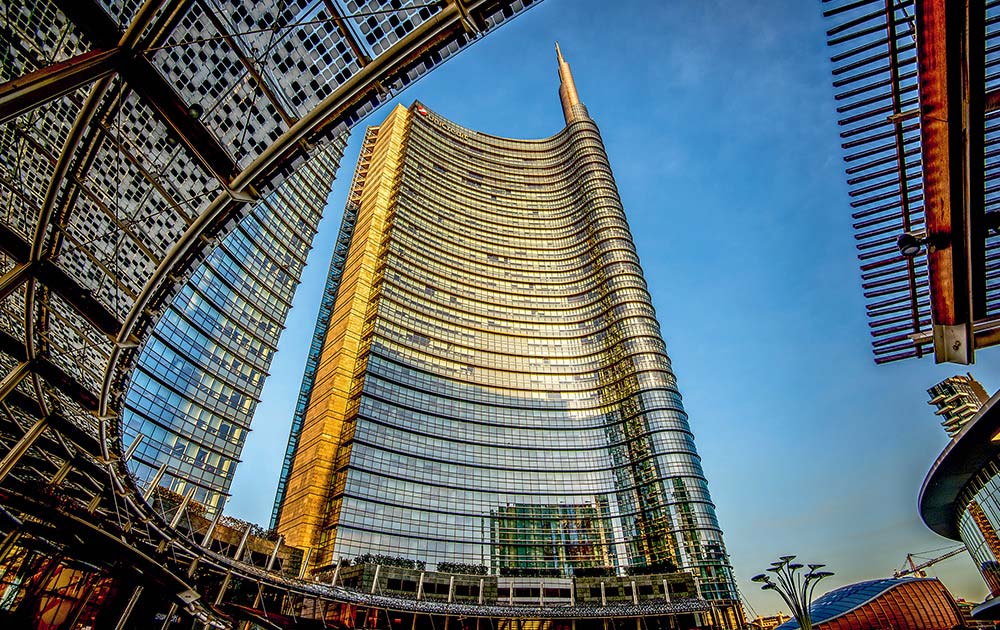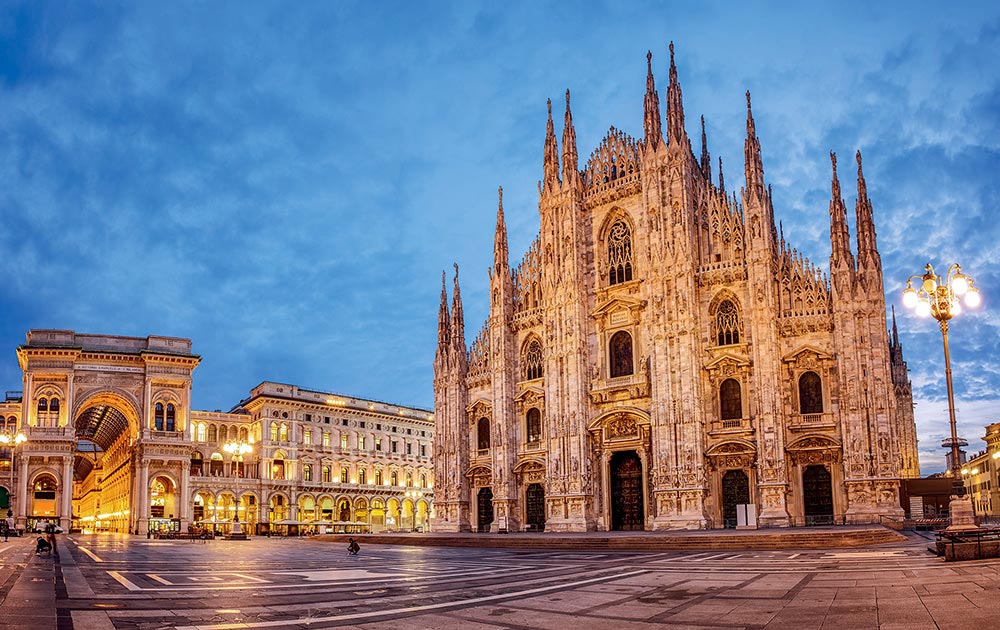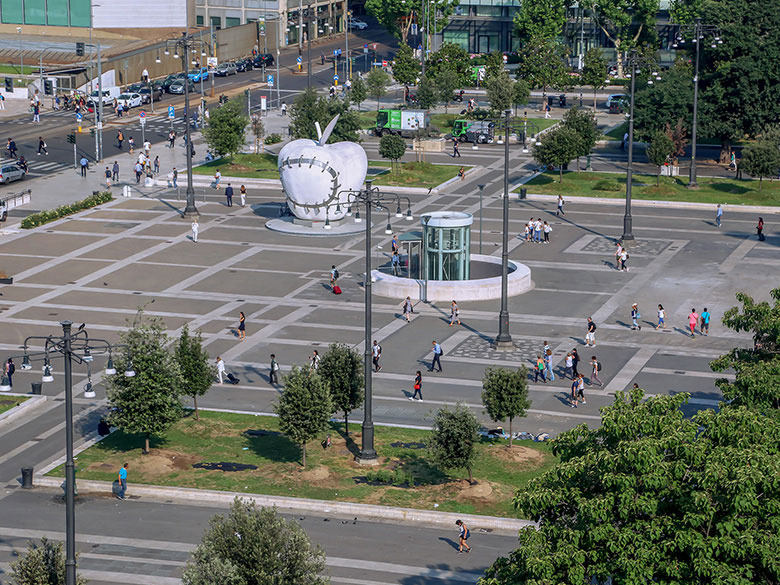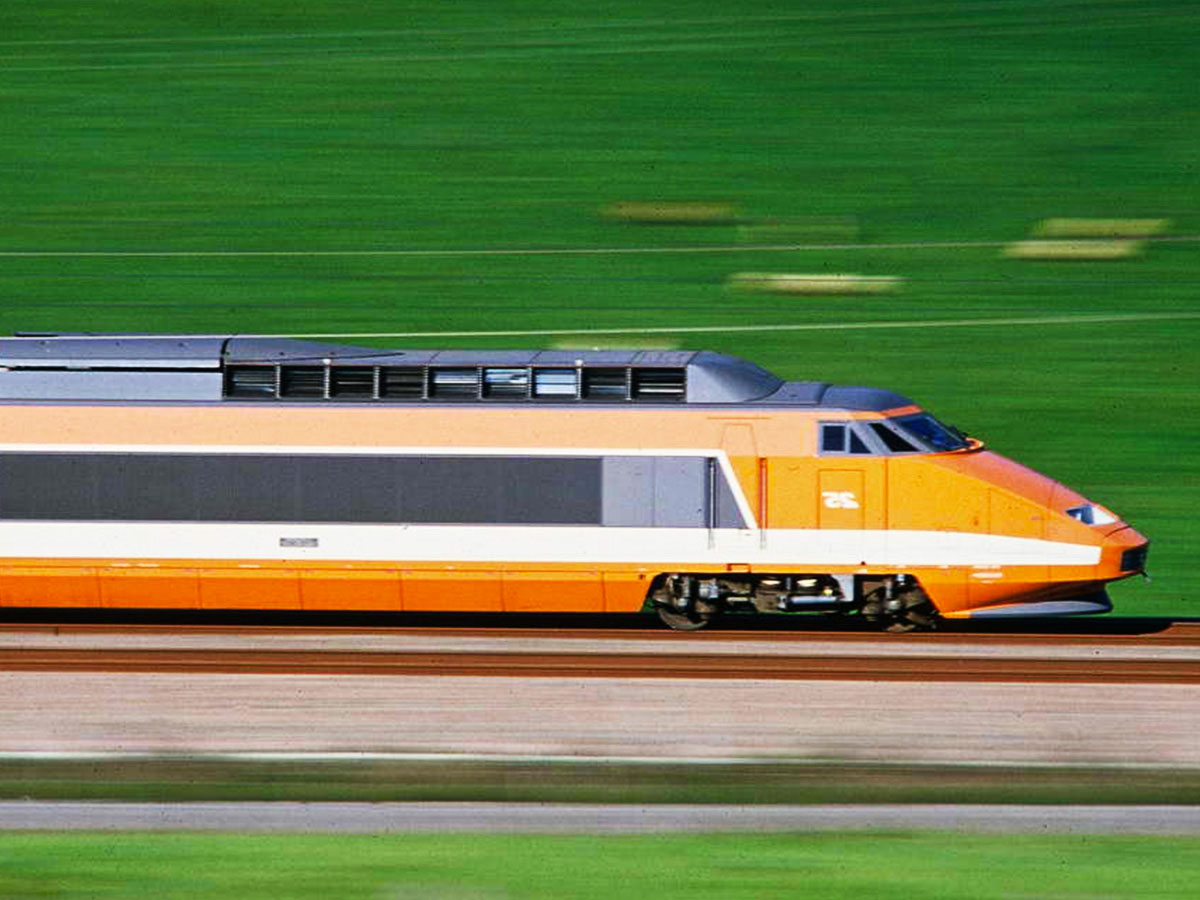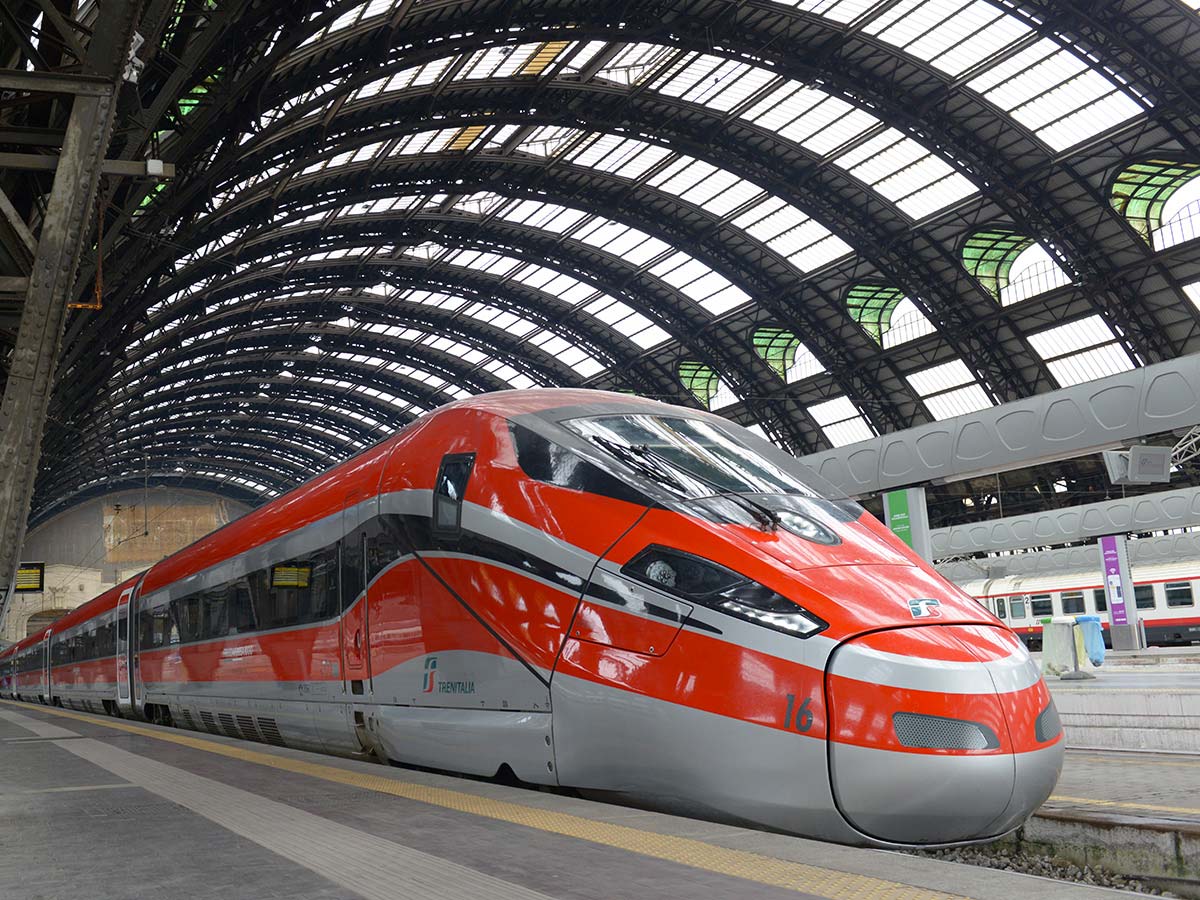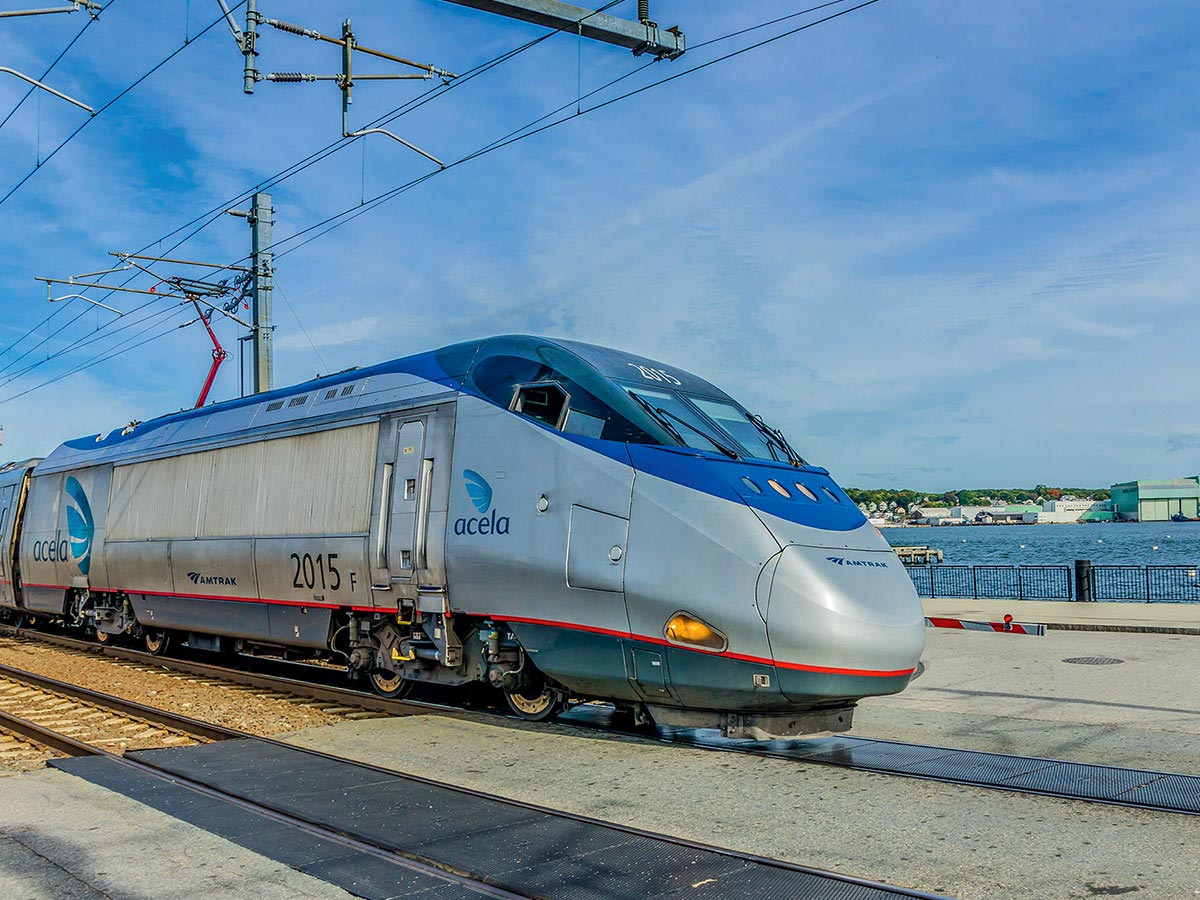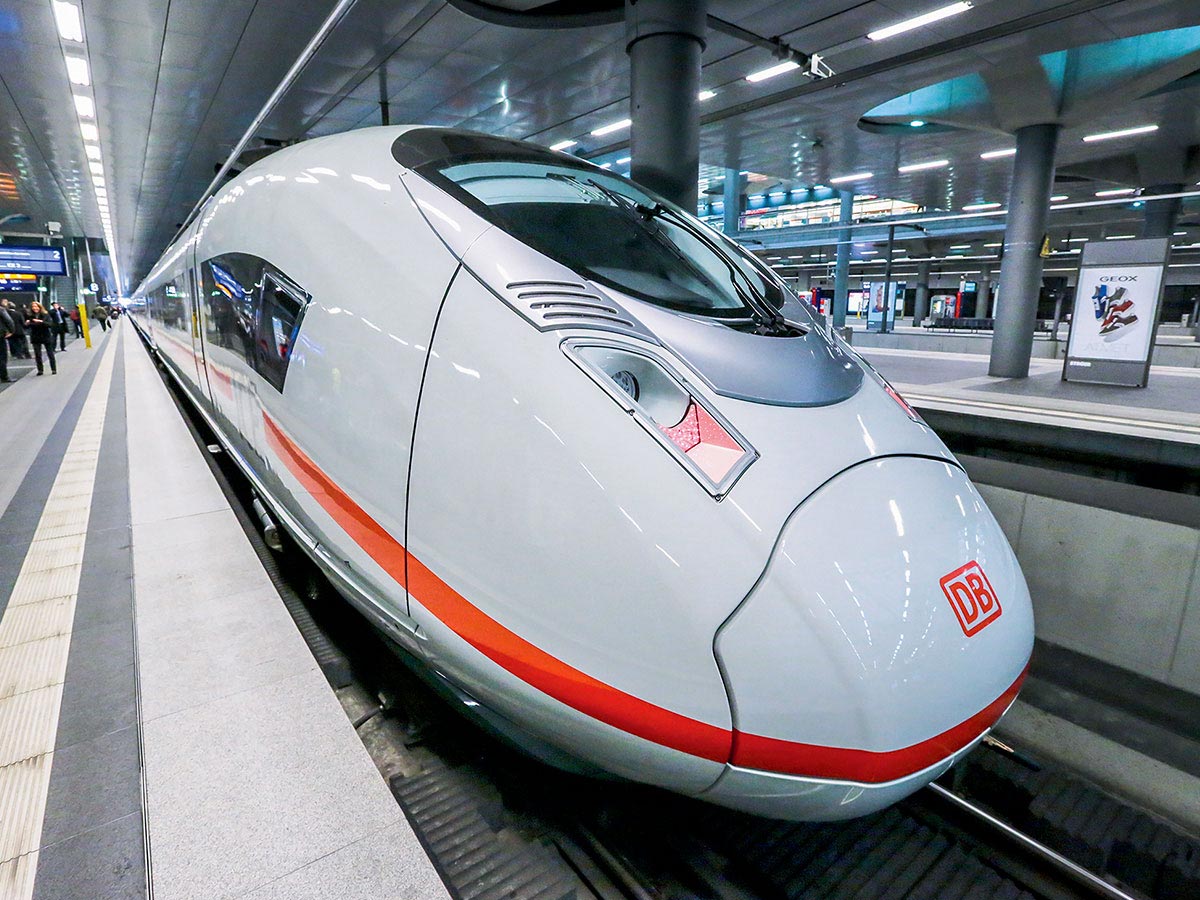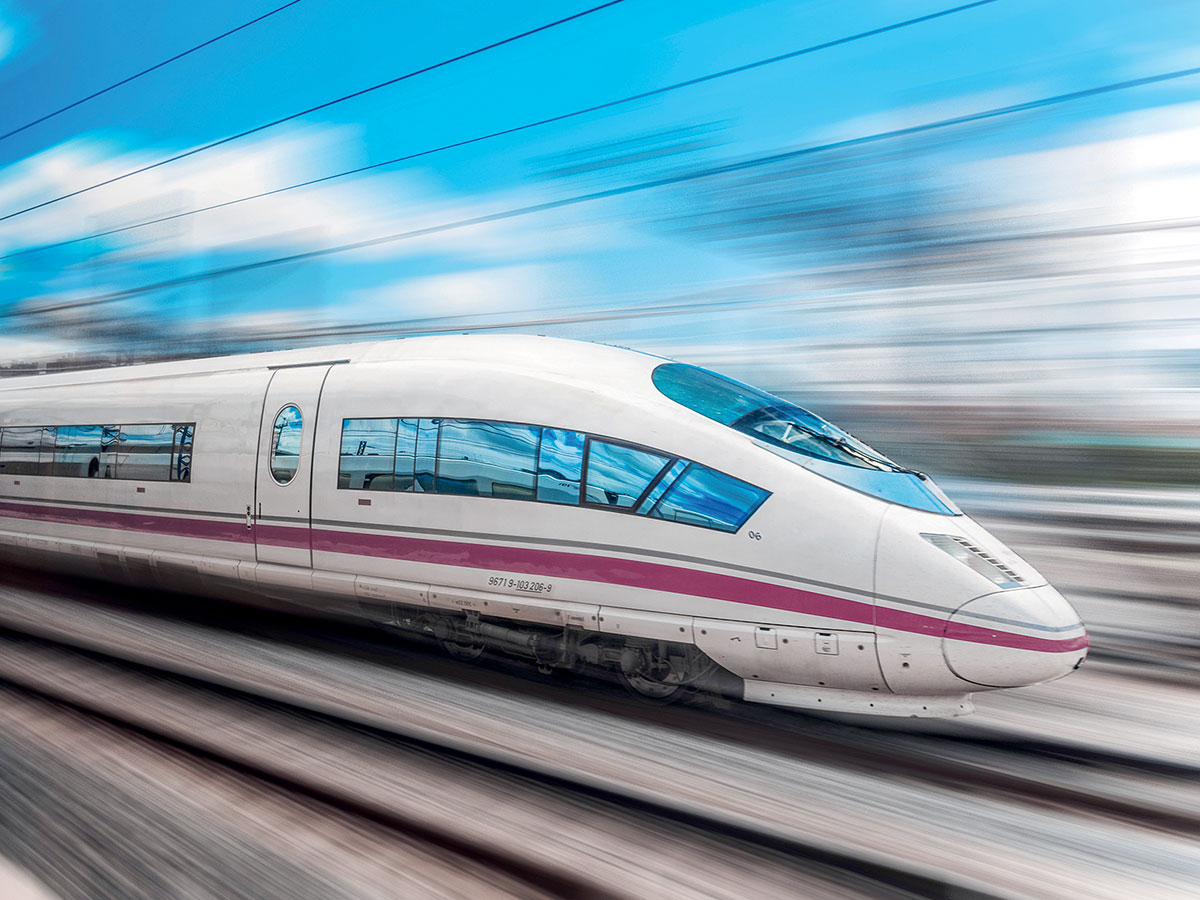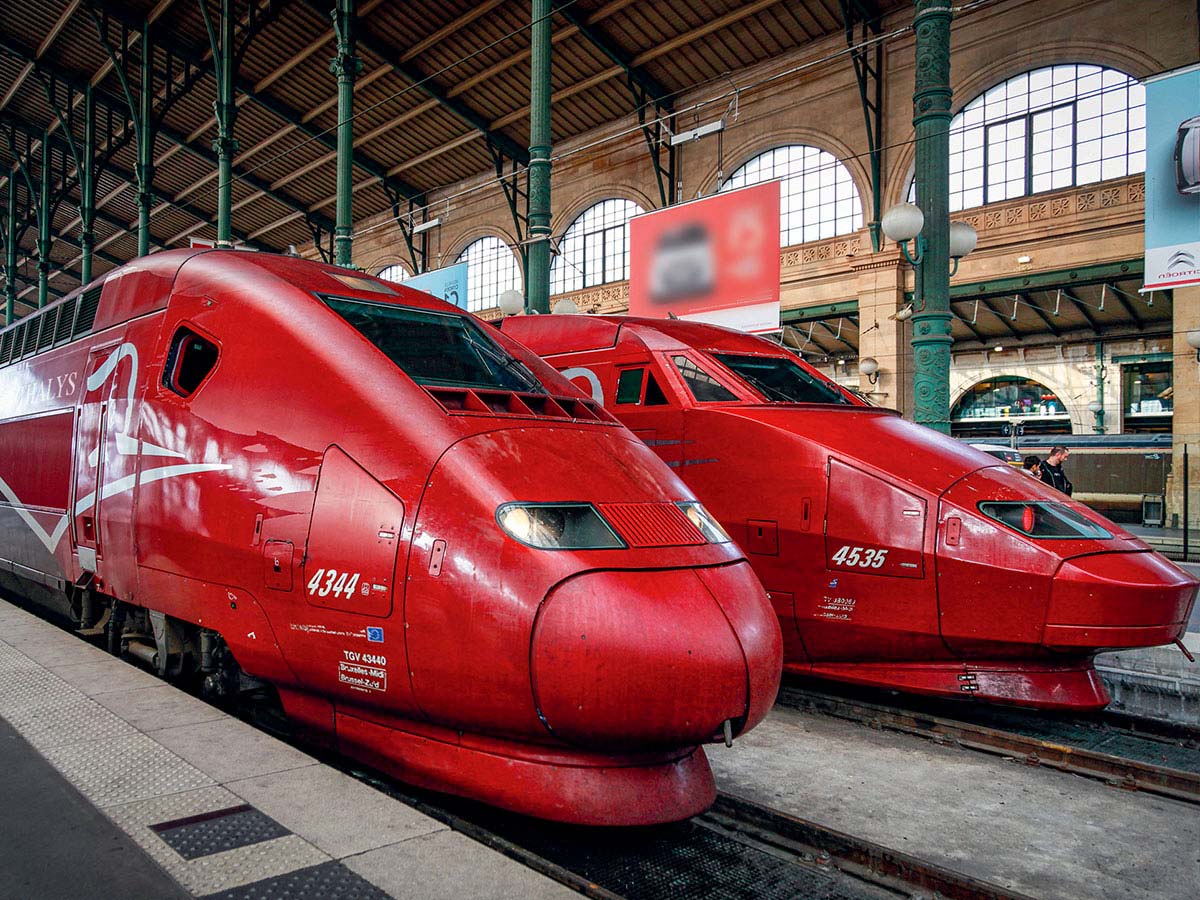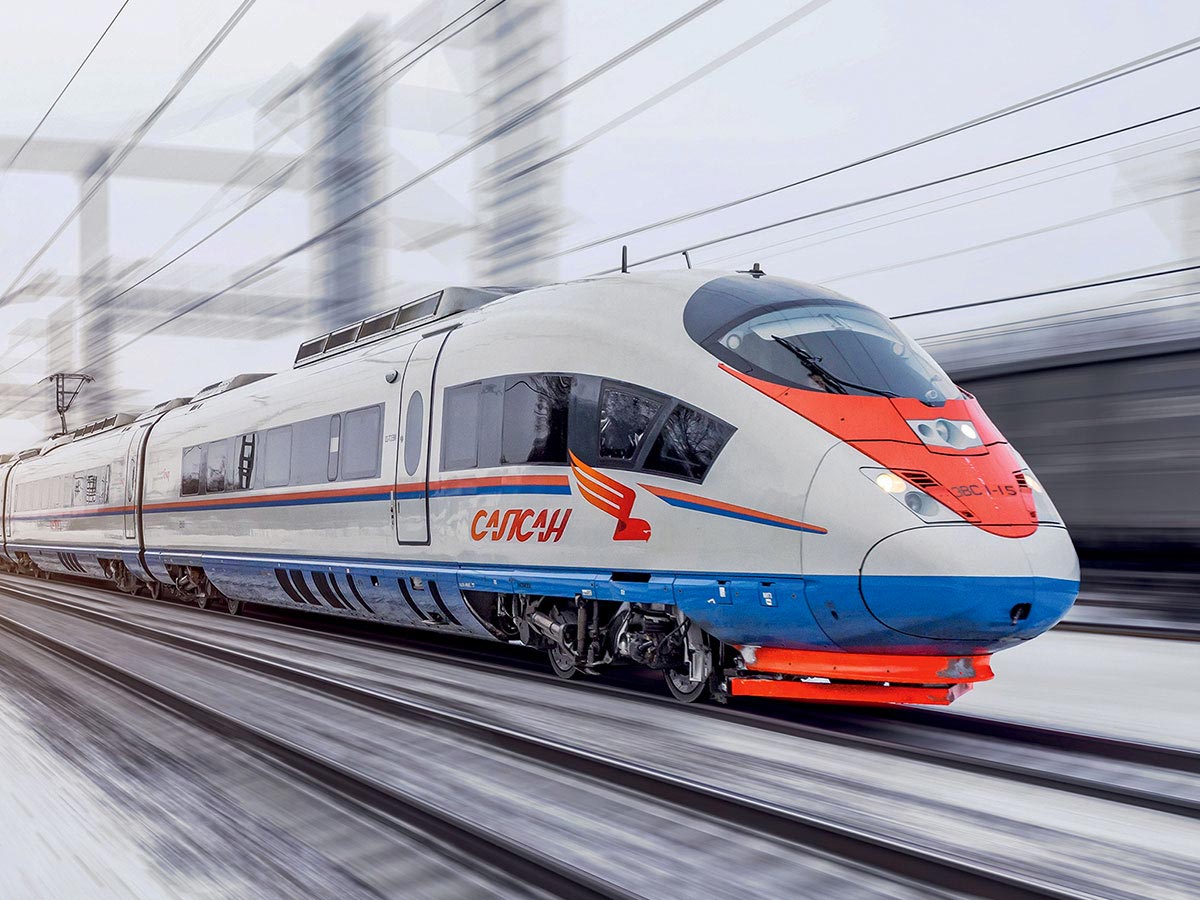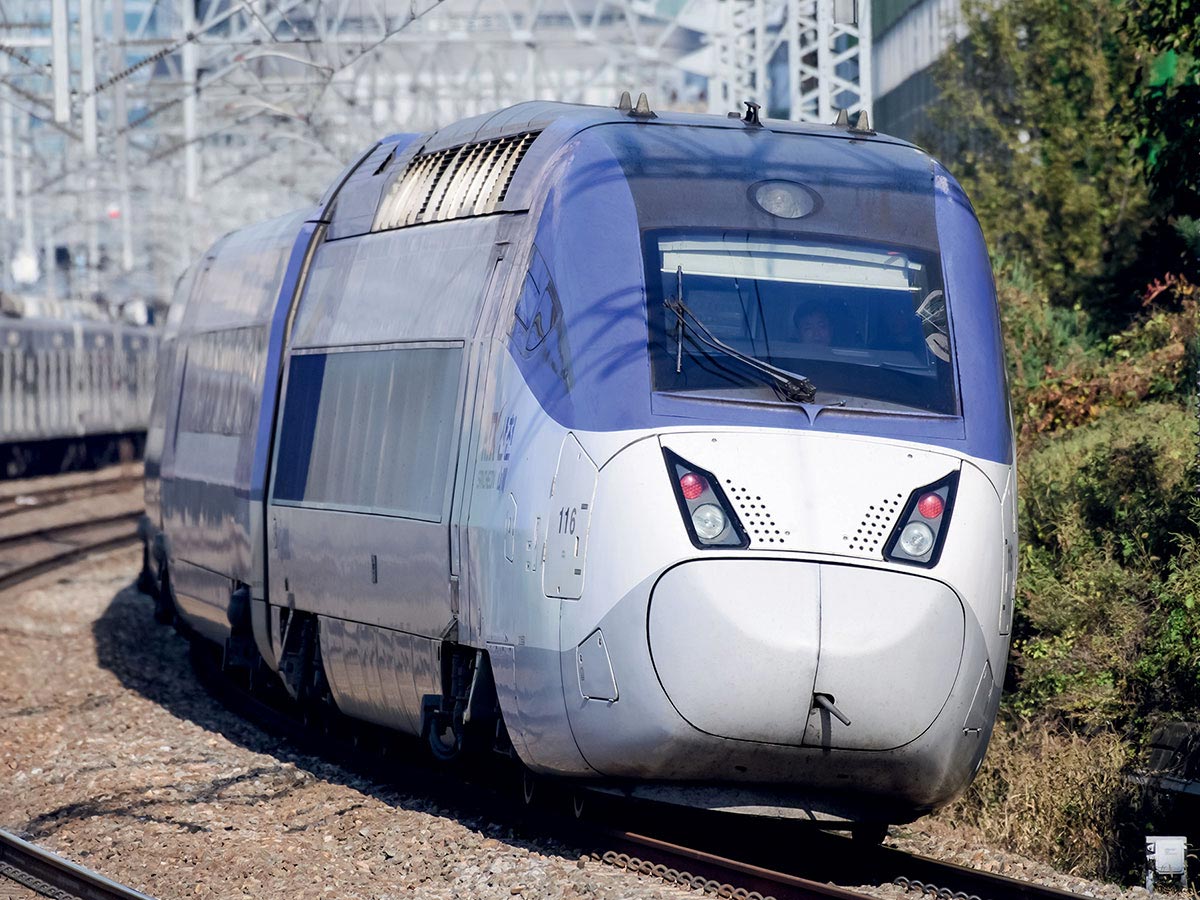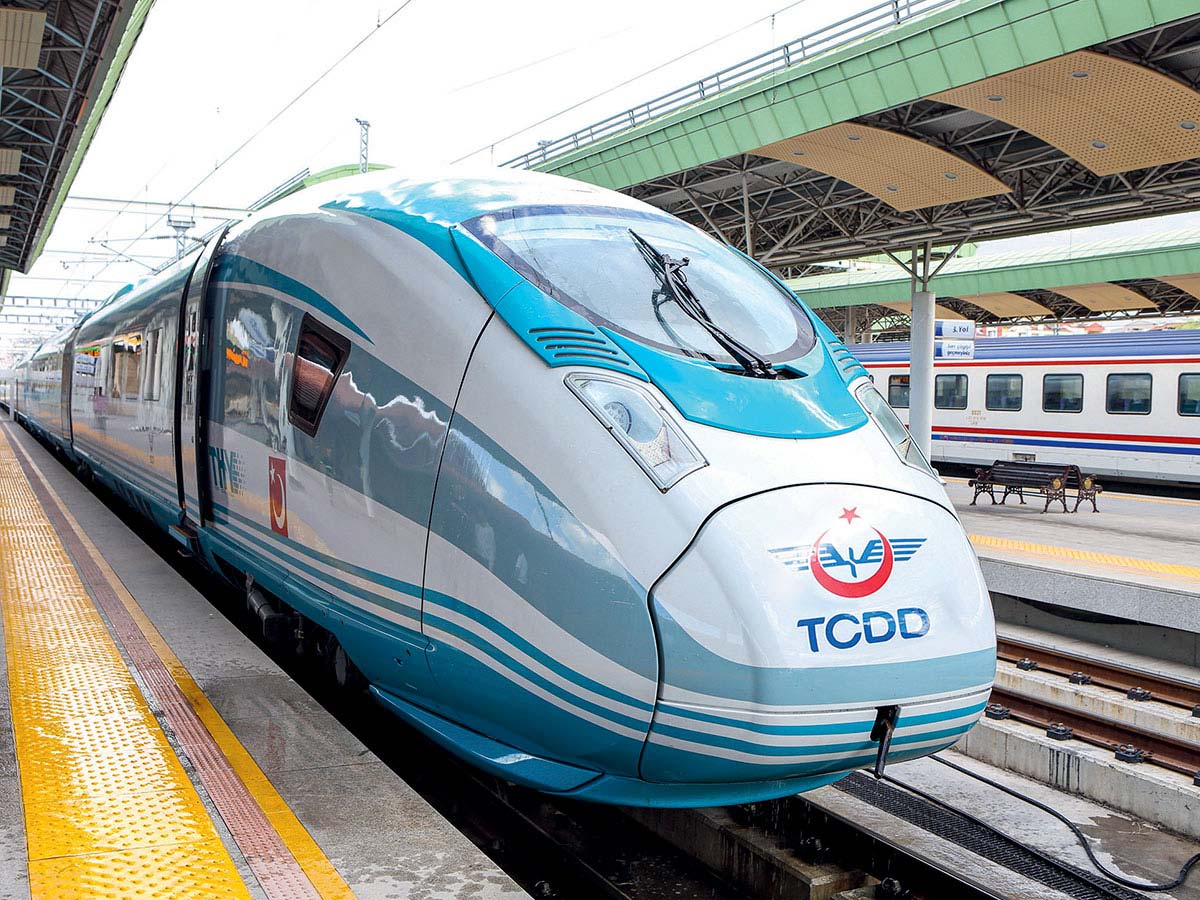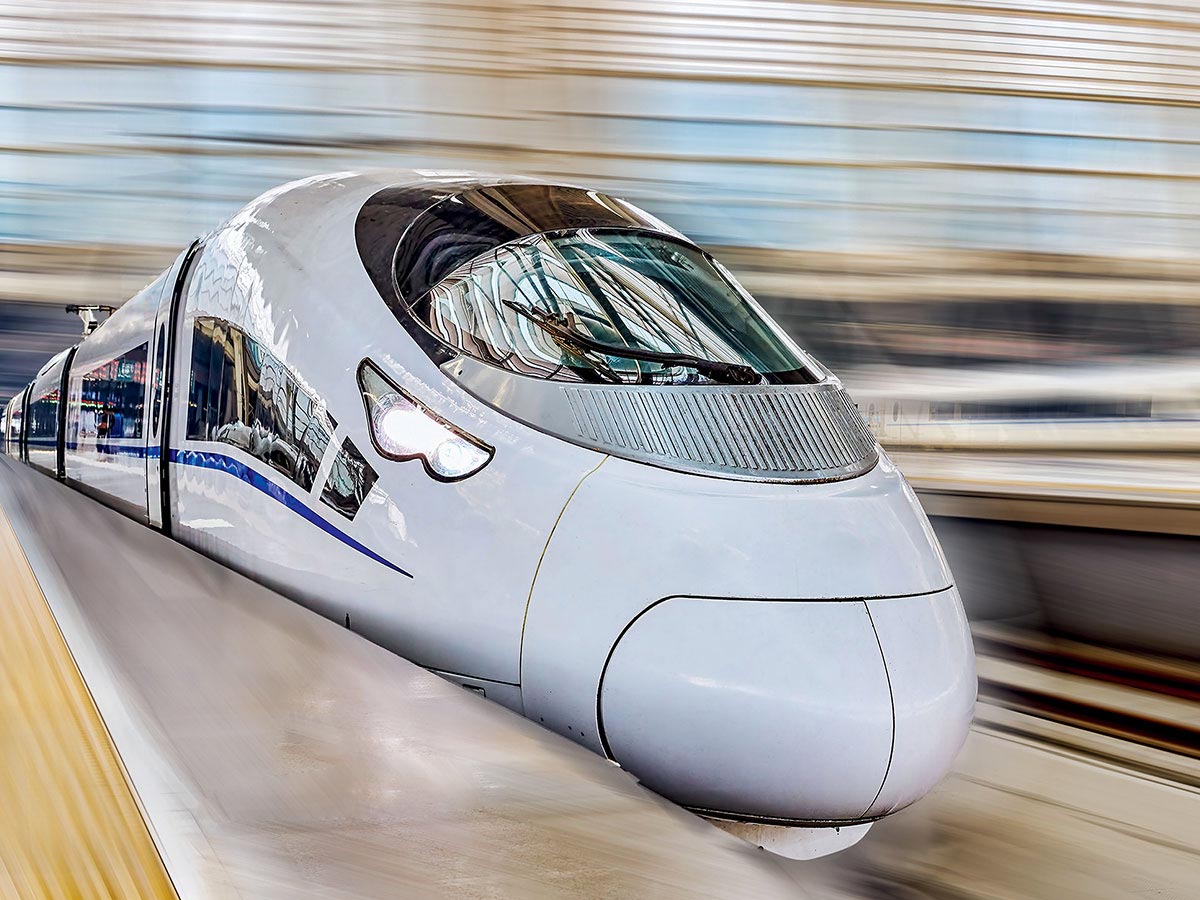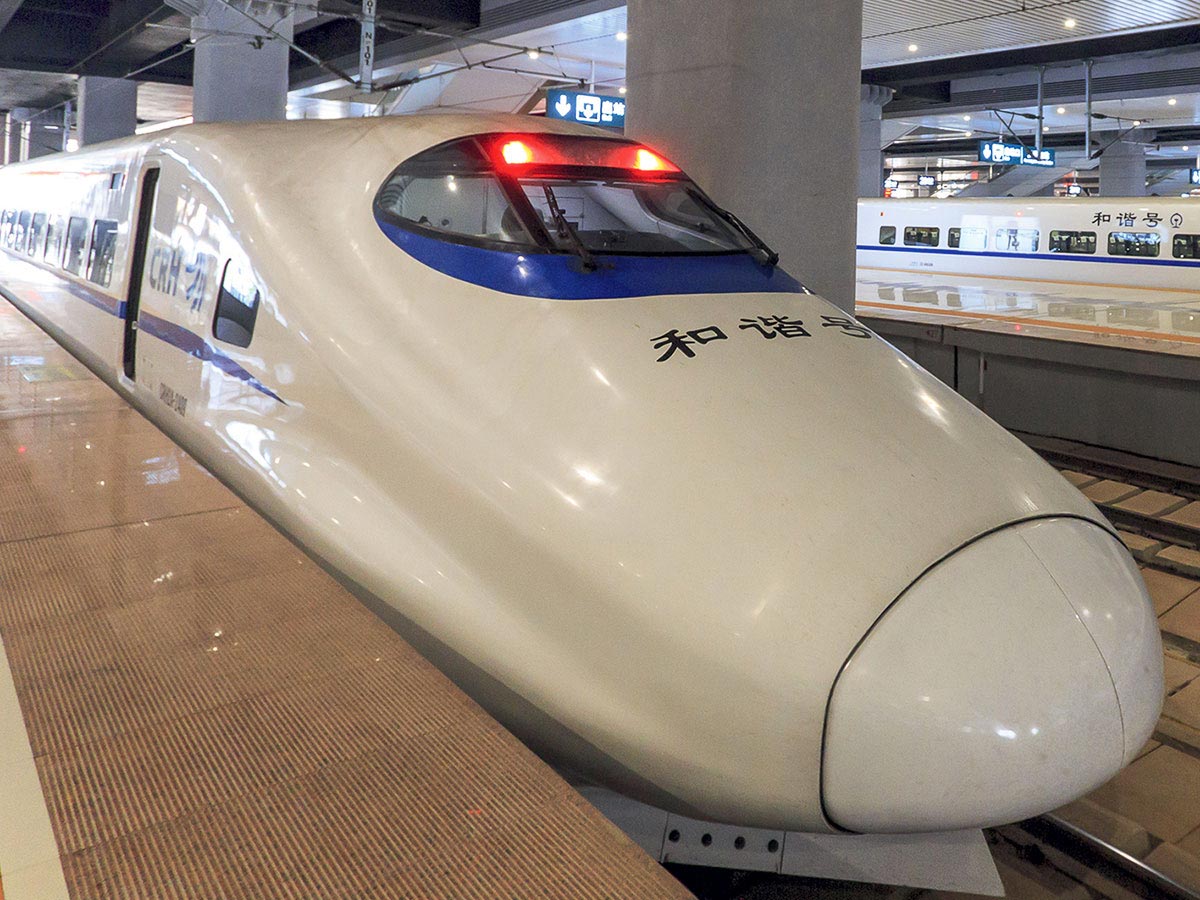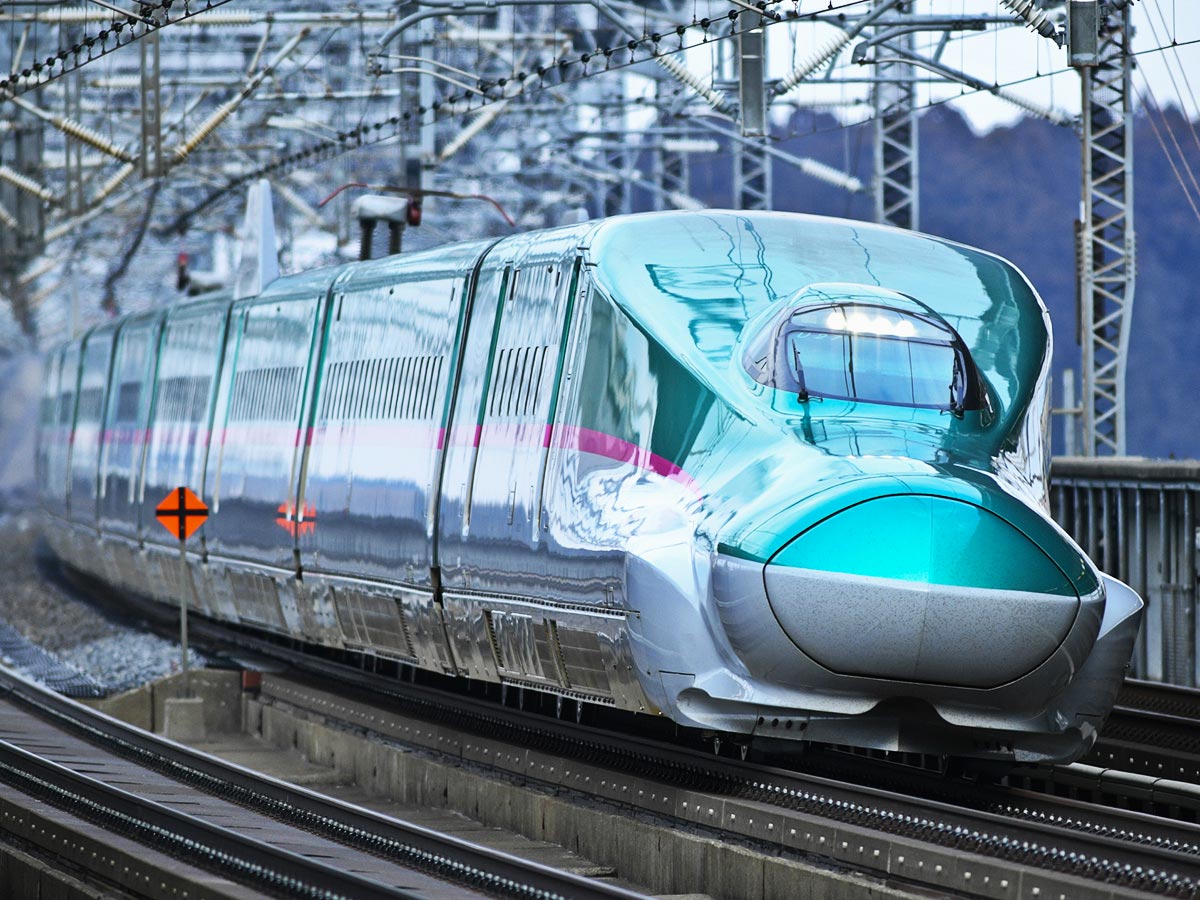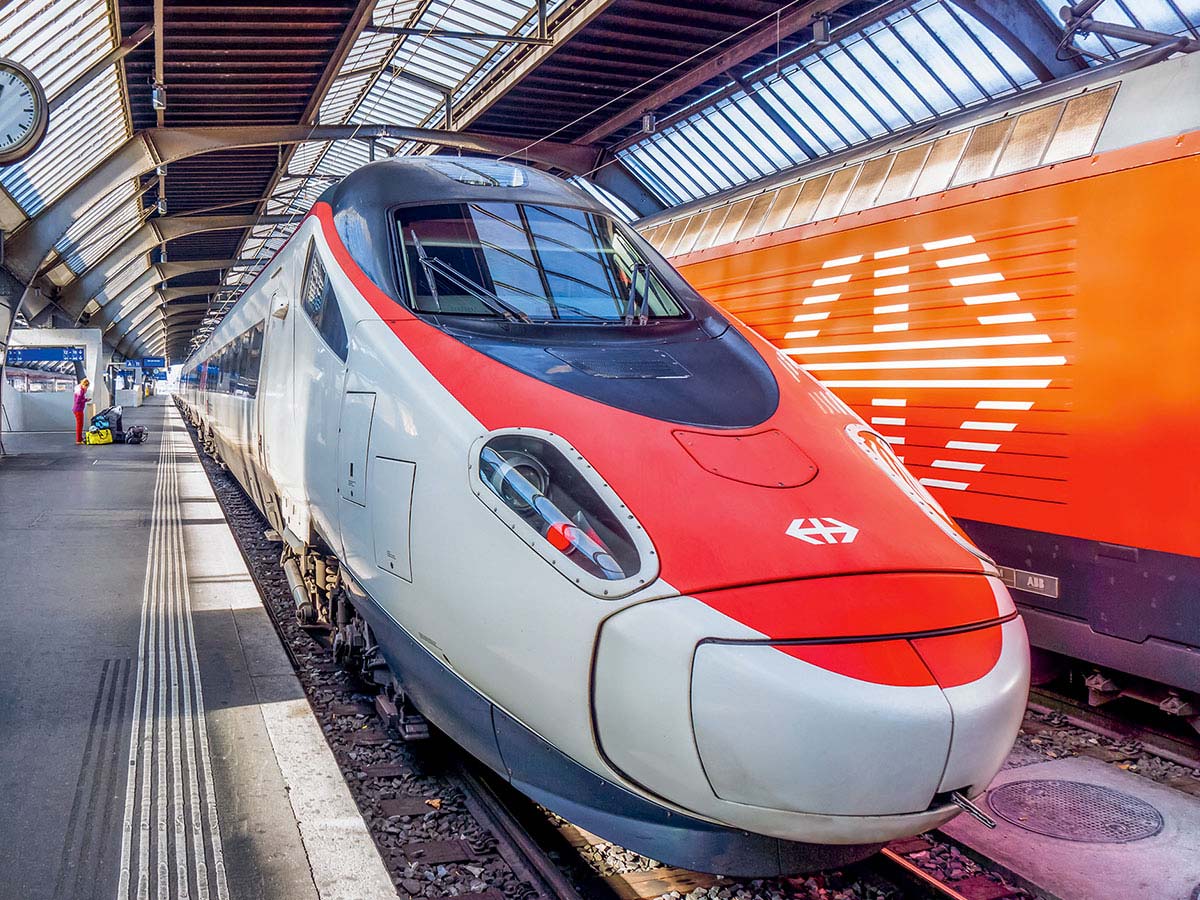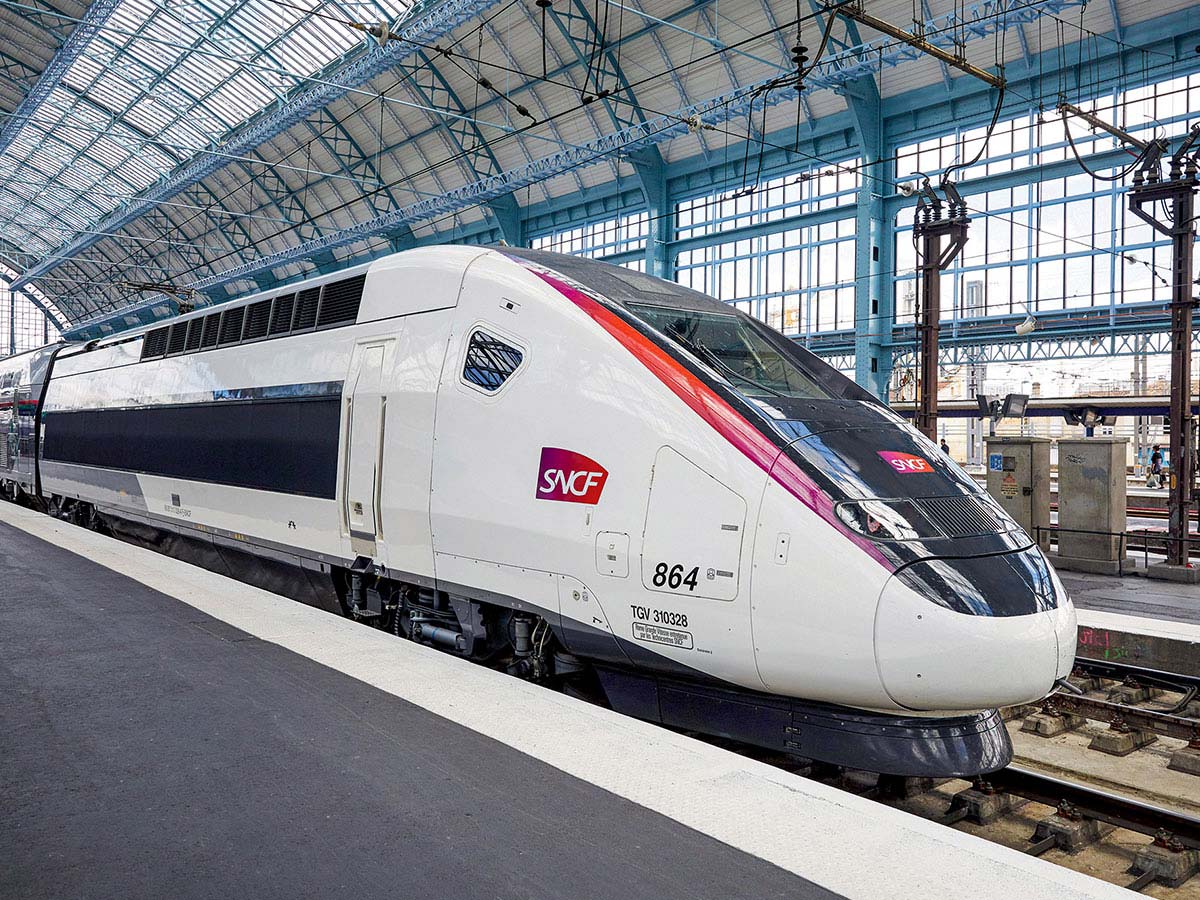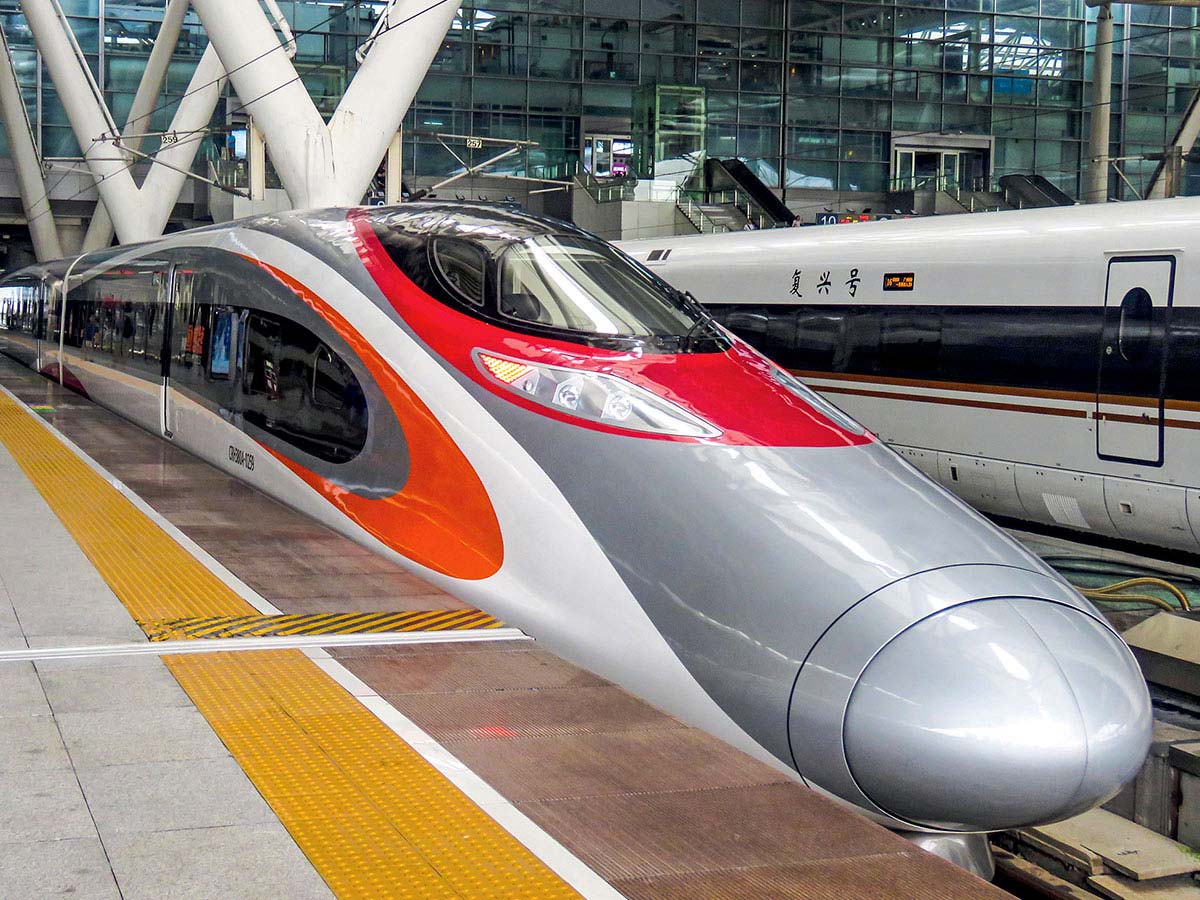ZURICH > MILAN


2016 | SWITZERLAND, ITALY
Journey

More Info
- Length in km: 218 km
- Name of the train: Giruno
The charm of Switzerland is not exclusive to its sumptuous landscapes, high mountains, and postcard scenes of alpine valleys and crystal-clear lakes. The country also captivates with its unique blend of culture, language, and soul that is equally Italian, French, and German. Switzerland –whose surface area is 60% alpine terrain – is situated in the heart of Europe, and a web of railway tracks weave and tunnel across the country to link its twenty-six canons, opening a strategic axis of transport between the north and south of Europe.
The link connecting German-speaking Switzerland to northern Italy was established in 1882 with the opening of the first high-altitude tunnel. The inauguration of the new St. Gotthard tunnel in the lowlands, in 2016, brought with it major economic opportunities. With the opening of the Ceneri Base Tunnel to the south by the end of 2020, the line - designed for a maximum speed of 250 km/hr - will connect Zurich to Milan in three and a half hours. St. Gotthard connects the seaports of northern Italy, and has become an essential link along the Rhine-Alps corridor, one of the most exploited freight axes in Europe. The 57-kilometre-long tunnel is at this time the longest tunnel in the world.
Leaving Zurich
When one thinks of the economic and financial capital of Switzerland, the image of a “city of banks” predominates, yet Zurich is much more than that. Creativity, innovative spirit and dynamism are reflected in its abundant artistic offerings, museums, art and design galleries, and theatres. The snow-capped Alps serve as a backdrop to the charm of the city’s historic medieval centre, whose cobblestoned streets are lined with colourful house façades. Elegant pathways and gardens line the northern shore of Lake Zurich, stretching over 40 kilometres.
The emblem of the city, rising above the exclusive shopping avenue of Bahnhofstrasse, is the central rail station of Zurich. Its classical façade resembles a monumental palace.
The main hall dates back to the 19thcentury, with a vast pedestrian concourse that is both a shopping and cultural centre. A highly-coloured sculpture is suspended from the ceiling, watching over travellers: Ange gardien (Guardian Angel) by Niki de Saint Phalle. A new underground station was built beneath the concourse level, significantly increasing the capacity of the original station without any interruption of rail activity. Also at underground level is the well-known commercial centre “Shopville”, which is home to over 150 shops spread over three storeys.
A Swiss saga
Switzerland has been a pioneer in the development of rail lines since the 19th century, and has demonstrated much audacity and ingenuity to integrate rail track across Alpine terrain. Tunnelling through the Alps has been an obsession for engineers and scientists since the 1850s. Under the direction of Swiss native Louis Favre, the first tunnel- 15 kilometres long – was excavated beneath the St. Gotthard in 1882. As this passage is situated at high altitude, freight trains are required to climb steep ramps: to reach the entrance at 1,100 metres, a supplementary engine was added at the base of the slope. In 1982, the opening of a road tunnel created competition for the St. Gotthard and for the railway, triggering an exponential increase in heavy vehicle traffic, and the discussion of a new rail tunnel that would pierce through Mount St. Gotthard at its base. In 1989, the Swiss government submitted its Alpine Crossing Railway project to all stakeholders. Thus, on 27 September 1992, the Swiss people adopted the federal decree for the construction of the “New Rail Link through the Alps (NRLA)” with 64% of the popular vote.
Construction works began in 1996,and the first tunnel boring machine was put into service in 2000. The 57-kilometre-long tunnel was entirely excavated by 2011, and was officially inaugurated on 12 June 2016.
The tunnel at the “base” of St. Gotthard was intended both for freight and passenger traffic. The opening of the tunnel at the base of St. Gotthard, as well as the upcoming Ceneri Base Tunnel, should provide for the reduction of trans-Alpine lorry journeys from 1 million to a maximum of 650,000 per year.
→ Giruno EC250 on a test run between Erlen and Romanshorn.
Zurich-Milan, the journey
The train leaves the central station and follows its path alongside vast Lake Zurich, crossing green Alpine meadows before arriving at Zug. This small, unassuming city is in fact the wealthiest district of Switzerland, thanks to the presence of multinational corporations that benefit from an attractive tax system. Nestled between mountains and lake, Zug is lined with medieval cobblestoned lanes and houses with steep tiled roofs. The railway line skirts Lake Zug until Arth-Goldau, where it joins up with Lake Lucerne, framed against majestic peaks and edged with terraced pastures. This area is considered to be the historic and geographic heart of Switzerland, as it is here that the Swiss Confederation was born.
The German-speaking canton of Uri is the legendary home of William Tell, remembered as the hero that liberated Switzerland from the yoke of the House of Hapsburg. In Erstfeld, Mount Bristen looms 3,073 metres above the tunnel entrance. The train then accelerates to cross the Alps for about twenty minutes, emerging into the light of day at Bodio, in the canton of Ticino. This is Italian-speaking Switzerland, “the other side of the Gotthard”, as Ticino’s inhabitants like to say. South-facing pre-Alpine valleys, baroque bell towers and vineyards herald the nearby presence of Italy, and the Italian language prevails. Bellinzona, tucked away in one of the region’s valleys, is a spectacular destination. The old city is laid out in the shadow of three majestic medieval castles surrounded by ramparts, all listed as Unesco World Heritage sites. The train continues on past the nearly-completed Ceneri Base Tunnel to arrive at Lugano, built upon the banks of its eponymous lake. This extraordinarily beautiful site is bordered by villages and peaked hills, palm trees and maritime pines. Its historic downtown offers lovely squares and narrow, winding streets. Lugano is a cultural city, and home to banks and luxury boutiques. The surrounding hills offer magnificent views upon Lake Maggiore and the Alps. The train crosses the Italian border at Chiasso, stopping at the blue-green lake waters of the charming – and lively - city of Como before entering the terminal station at Milan.
St. Gotthard, the building project of the century
Measuring 57 kilometres in length, the new tunnel at the base of St. Gotthard is today the longest railway tunnel in the world. This “building project of the century” is a testament to Swiss precision, innovation and reliability, and is the pride of an entire nation. Thousands of miners, workers, and engineers worked night and day for seventeen years on this gigantic and extremely complex project. The size of the structure represented one of the major challenges of the project: an exceptionally long tunnel, in a confined space with limited access. The St. Gotthard was designed to navigate steep inclines and level out tracks from north to south. At mid-point, the Alps reach altitudes of 2,300 metres – it was a geological, technical, and totally historic accomplishment. The St. Gotthard tunnel includes two single-track galleries, each 57-kilometres-long, connecting galleries, over 150 kilometres of service corridors and multiple smoke extraction ducts. The works began with the construction of boreholes and exploratory tunnels. Drilling for the two parallel casings was undertaken simultaneously on five fronts, from north to south, at Ersfeld, Amsteg, Sedrun, Faido and Bodio.
The tunnel in figures
→ The two tunnels (St. Gotthard and Ceneri) were constructed by Alp Transit Gotthard SA, a wholly-owned subsidiary of CFF.
→ 178 kilometres of galleries perpendicular to the tracks.
→ 2,800 kilometres of cables.
→ 4 million tons of cement poured.
→ 28 million tons of rock excavated, roughly 5 times the volume of the Great Pyramid of Giza.
→ 3,900 staff hired for the maintenance and operation of the tunnel.
Four tunnel boring machines excavated earth and rock, some of which was cleared by detonation. With temperatures reaching 50 °C in the galleries, the installation of a ventilation system was required, allowing for miners to continue works at a maximum ambient temperature of 28 °C. Completed on 15 October 2010, the alignment of the tunnel segments was a spectacular operation: two tunnel boring machines from opposing directions met, with only 8 centimetres separating them.
The objective of the Swiss railways was to operate two passenger trains and six freight trains every hour, travelling in opposite directions and at varying speeds, and in order to do so they installed the latest generation signalisation systems. Traffic monitoring and control is carried out using the Level 2 ETCS (European Train Control System). Beacons and axle-counters provide real-time data transmission between trains using the tunnel and the control centre, situated at the south entrance. For security reasons, two emergency posts have been put in place to allow for rapid intervention in the event of an incident.
→ Platforms at Zurich Main Station.
Giruno and St. Gotthard
Giruno– pronounced “chee-roo-no”in local dialect – is the Italian name for “buzzard”, and the most recent train put into operation by Swiss Federal Railways (CFF), which has made significant investment in new trains dedicated to international north-south traffic. Twenty-nine new Giruno self-propelled train sets were purchased from manufacturer Stadler Rail, benevolently named “Smile”. Adapted to the severe conditions of the Gotthard tunnel, and put into service in 2019, this train intended for high-speed will operate primarily on the Zurich-Milan line at speeds up to 250 km/hr on approach routes and 200 km/hr in the tunnel. The train is able to operate without changing locomotives in Switzerland, Germany, and Italy.
Among the eleven cars in each train set, second class is distinguished by its blue-grey seats, and first class by its colour scheme of anthracite and red. Several innovations are specific to the train: ski racks along with many baggage racks, separate restrooms for women and men, bright and contemporary lighting. The restaurant car can accommodate up to 17 passengers. Particular care was taken by the manufacturer for thermal and acoustic isolation, and the train offers absolute comfort travelling through the long tunnels at St. Gotthard and Ceneri.
→ A Giruno tilting high-speed train at Zurich Main Station.
Arriving at Milan
The Milano Centrale station is already a destination in itself. This spectacular monument – a symbol of the power of Mussolini’s regime in 1931 – dominates the piazza of Duca d’Aosta. Renovated in 2008 to coincide with the arrival of high-speed trains, the station has preserved an architectural style that combines highly diverse aesthetic forms. The 200-metre-long façade blends 19th century Beaux-Arts style with the elegance of Art Deco and Art Nouveau, while certain decorative elements refer to antiquity, allegories to science, and mythical representations. Escalators criss-cross the wide concourse where travellers can admire frescoes and bas-reliefs, while the platforms feature immense steel-and-glass arches that cover all 24 tracks.
At the heart of Lombardy lies Milan, the most influential city of Italy, which is home to nearly half of the region’s inhabitants. This bustling economic capital is also a city of art, and the jewel in the city’s crown is the Duomo, the white marble cathedral studded with arrows. Master artworks fill galleries and museums, and classical palaces lend an air of refined elegance. This dynamic creativity is also clearly evident in the areas of fashion, contemporary design, architecture, and cultural events.
A new momentum for rail
The majority of trains that cross the St. Gotthard Tunnel are transporting freight. This was in fact one of the major challenges of the project: to streamline trans-Alpine traffic for north-south connections between the ports of the Netherlands, Germany, and Italy. The tunnel has allowed for the increase of freight capacity, offering faster connections and more reliable and affordable logistical solutions for clients.
The new rail also saves passengers thirty minutes travelling time between Zurich and Milan, and tempts drivers with the advantage of avoiding traffic jams or road closures due to snow. Thanks to the number of trains in operation, many business passengers prefer this mode of transportation to air travel, opting for day trips to Milan. Journeys are more comfortable, and trains are frequent.
For Ticino, a region that is southern not only in geographical terms, but also culturally and linguistically, the opening of the tunnel has spurred a veritable revolution of mobility in the canton. Travel times between major cities and the southern Alps have been reduced by sixty or even ninety minutes. The metropolitan areas of Lugano and Bellinzona have already seen new commercial development near the rail station. Ticino has grown closer to northern Switzerland, and has enjoyed a boost to the local economy. The tourism sector has also benefitted from the opening of the tunnel, and hotels in the canton have remarked an increase in turnover. On the northern side, Zurich is proud to deepen relations with Italy, and more particularly with the economic metropolis of Milan.
From an ecological point of view, the Swiss people are very interested in environmental concerns, and the regulatory regime with respect to emissions of exhaust gases and harmful substances is among the strictest in the world. In addition, replacing heavy vehicle road traffic by freight trains offers the advantage of considerable CO2 savings. Moreover, the St. Gotthard Tunnel, built into the lowlands, reduces transport’s ecological footprint by allowing for traction energy savings due to the gradual incline of the track.
a selection of HIGH-SPEED LINES by creation date
1964

TOKYO > OSAKA
1992

TURIN > NAPLES
1992

MADRID > SEVILLE
2002

COLOGNE > FRANKFURT
2008

BARCELONA > MADRID
2010

SEOUL > BUSAN
2011

BEIJING > SHANGHAI
2014

ANKARA > ISTANBUL
2014

LANZHOU > URUMQI
2016

SHANGHAI > KUNMING
2016

TOKYO > HAKODATE
2016


ZURICH > MILAN
2018

BEIJING > HONG KONG
2018

TANGIER > CASABLANCA
